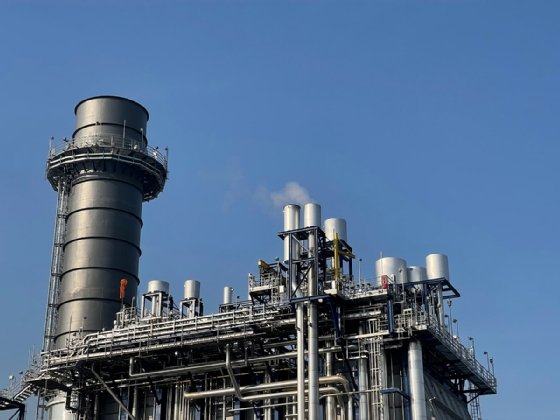Understand the role of IT/OT convergence in oil and gas
The oil and gas industry can benefit from the operational insights that IT/OT convergence provides. Predictive maintenance, in particular, helps improve safety and control costs.
The lines between IT and operational technology are starting to blur. IT/OT convergence has already entered full force in areas such as the manufacturing industry, where IoT adoption is reaching new heights. As Industry 4.0 expands to other sectors, industries such as oil and gas are starting to undergo IT/OT convergence, too.
The industrial world as a whole is becoming increasingly digital and data driven. Although the oil and gas industry hasn't always been on the cutting edge of technology, it might not have a choice for much longer. Digital transformation is becoming more than just an advantage. Before long, it'll be a necessity.
IT/OT convergence in the oil and gas industry is inevitable, in part because its benefits are too substantial and the sector's problems are too significant.
Why the oil and gas industry needs IT/OT convergence
IT/OT convergence is a necessary step for the oil and gas sector for many reasons. First of all, the industry is prone to disruption. Spills, leaks and outages are common occurrences, and these can be both costly and dangerous. The 2013 Tesoro pipeline spill, for example, took five years and $100 million to clean.
Bringing IT and OT together can provide the insights companies need to mitigate operational problems. IoT devices can help pinpoint problems when they arise, leading to faster response times. Predictive analytics from real-time data can help improve operations to prevent these issues in the first place.
The oil and gas industry also must modernize to stay relevant amid shifting markets. Renewables such as solar and wind now generate 12% of U.S. electricity, and today's consumers demand sustainability.
Business insights from IoT sensors can show oil and gas companies how to become more sustainable. The cost savings of IT/OT convergence can also help the industry lower consumer costs, remaining competitive in a changing market.

What does IT/OT convergence look like in oil and gas?
The most straightforward example of IT/OT convergence in oil and gas is predictive maintenance. IoT sensors can track basic functionalities of mission-critical equipment to predict when they'll fail. Workers can then repair gas lines and other infrastructure before they break down, leading to cost savings and increased uptime.
Similarly, acoustic sensors can analyze oil flow in pipelines, transmitting that data in real time. These operational insights can then inform automatic adjustments where the system corrects itself to maintain optimal flow. With these improvements, oil and gas operations can become far more efficient, reducing costs and avoiding disruptions.
Remote asset management technologies can go beyond tracking data, letting employees control functions from a distance. These remote-control systems improve flexibility while minimizing worksite injuries and fatalities. Because drilling alone killed 10 people in 2017, removing people from dangerous tasks is a crucial step forward.
A fairly new instance of IT/OT convergence for oil and gas is the creation of digital twins. Remote sensors can create virtual models of various assets that are accurate up to the second. These digital twins let engineers see where they could improve infrastructure design or identify potential issues.
Like in the manufacturing industry, IT/OT convergence can also help oil and gas companies become more sustainable. Connected systems can respond in real time to changing conditions to use only as much energy as necessary. Oil and gas companies can then reduce their energy expenses and carbon footprints.

Benefits of IT/OT convergence
These use cases are just a sample of how IT/OT convergence can push the oil and gas industry forward. By implementing these technologies in more oil and gas operations, the sector can resolve longstanding challenges, including the following:
- lowering costs;
- improving safety;
- increasing uptime;
- offering more reliable customer service; and
- reducing carbon footprints.
These areas have been pain points for the oil and gas industry for years. As the sector starts to move past them with IT/OT convergence, it can meet the changing needs of a shifting world. Other industries and consumers are moving toward digital transformation, and these advances let oil and gas keep pace.
Overcoming IT/OT convergence challenges
As oil and gas companies continue their digital transformation journey, they should acknowledge some IT/OT convergence challenges. Most notably, IoT devices present a potential security threat because many don't have extensive built-in security features. The more devices that enterprise networks have, the more entry points there are for hackers.
The Colonial Pipeline hack demonstrates how simple poor password management can cripple the largest fuel pipeline in the country. The hackers found the password for a VPN account that the employees no longer used, but still worked. In light of this risk, oil and gas companies should establish strict cybersecurity controls, including employee training.
If organizations also gather personal user data -- such as names, addresses or financial information -- they need a strict privacy policy. That includes not collecting data without user consent and keeping this information separate from other systems. If companies store this sensitive data in the same system as unrelated IoT devices, it increases the chances of a breach compromising it.
To minimize costs and disruption, oil and gas companies should look for device and legacy equipment compatibility. Before buying any new IoT devices or IT platforms, organizations must ensure they can integrate with current systems.
IT/OT convergence is also typically an expensive undertaking. Given the high upfront costs, companies should start small and collect as much related data as possible. Analyzing this data can reveal operational insights on where the most profitable places to expand are.
Similarly, after implementing any upgrades, companies should monitor for any changes. Positive trends show how to improve other systems, and negative ones inform organizations to stop disruptions early.

IT/OT convergence is the future of the oil and gas industry
The oil and gas industry must embrace digitization to meet the needs of an agile, data-driven world. IT/OT convergence is the natural next step in this digital transformation journey.
If the industry can start small and work to overcome IT/OT convergence challenges, it will reap substantial rewards. Careful investment in these technologies can make oil and gas safer, more affordable, reliable and flexible. Pain points that once defined the industry could become a thing of the past.







